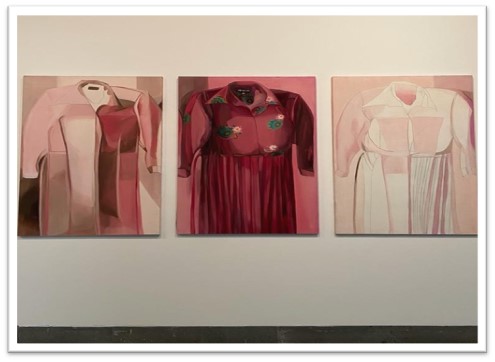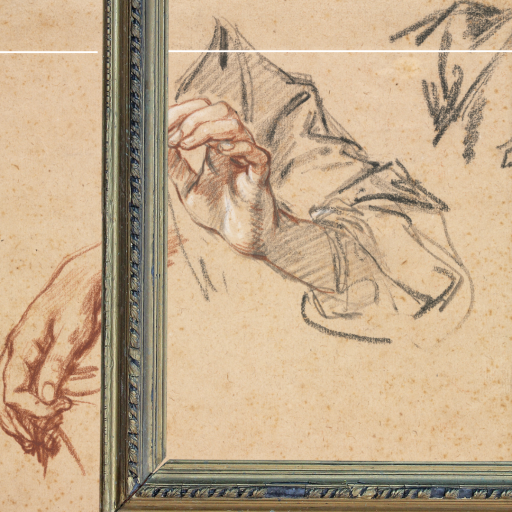The Skin Body and I
12 Eylül 2022Sude Çıbık
First of all, I would like to introduce who İpek Duben is in my article. İpek Duben was born in 1941 in Istanbul. She earned a master’s degree in Political Science from the University of Chicago in 1965 after graduating from English High School and Arnavutköy American Girls’ College in Istanbul. She pursued her doctoral studies in the same department till the dissertation stage (1969). Then she attended the Studio School in New York from 1972 to 1976, where she studied art. She organized exhibitions and provided art reviews for Milliyet Art Magazine, History and Society, Dimension, and Art Around Art after returning to Istanbul in 1977. Mimar Sinan University awarded her a degree in art history in 1984. When she returned to Turkey, she produced her first work, the series “Şerife.” In this exhibition, we can see again Duben’s work dated to that period. Back in 1980, İpek Duben’s “Şerife” series received an award.
The exhibition’s theme is briefly based on gender inequality. The artist wants to paint the cleaner, namely the housemaid, who came to his sister’s house. Duben wants to paint her, but she cannot get permission from her, so she paints her clothes instead, creating an abstract model. The exhibition intends to draw attention to women whose social labor is invisible. In the exhibition, there is also the work series titled “Adale Adam” (Muscle Man) (1988), which was inspired by a newspaper clipping. They also evoke feelings and thoughts about gender stereotypes. The three works in “Adale Adam,” depicted in a headless form, offer us to see male bodily self-love and arrogance with their intense muscles and nudity. In my opinion, the general theme of the exhibition is successful in creating an awareness of feminine and masculine ways of relating to the body. It is necessary to raise awareness, especially for our country. Although the visually abstract paintings attracted my attention more, I was impressed by the fact that the İpek Duben “Şerife” paintings were painted in more than one way of the same kind, and the meanings of each differ. In the same way, I like that there is a complete set of them, in varying styles, in the entire exhibition.


We have read many articles and books on gender inequality in our Turkish class. Therefore, I found it very convenient to choose this exhibition because it is a topic to which I could relate. In addition, I had the opportunity to interpret the paintings with the aesthetic theoretical tools from our aesthetics course. In the study I have discussed, we can see the traces of representationalism. The artistic idea is represented in the image of the disembodied clothes of the character/housemaid. They are a devastating metaphor for the invisibility of female identity. Moreover, it also conveys class-based timidity and brings up the invisible assets of those who migrate from the village to the city. An abstract representational model comes to the fore in the name of real-life subjects. Duben transfers the lifeless model to representations of everyday working women by painting images in which the Şerife’s face is not visible. The presence of more than one Şerife painting in the exhibition attracted my attention. At this point, I saw that various representations were included in the images. I think the picture of each Şerife, some of which consist of many colors, some of which are monochrome drawings, also represent different moods. In addition, as I mentioned before, in the exhibition, there was a male figure that was proud of his muscles and was not afraid to show his naked body. Next to him, I could see Şerife’s shyness was present. The juxtaposition of these two series in the exhibition draws attention to the inequality between the representations of the body in a sense.
The use of colors, shadows, and reflections in the overall exhibition was awe-inspiring. With İpek Duben’s aesthetic ideas and her designation of the place of women in society through the disembodied clothes of the housemaid (Şerife), I see that the artist succeeds in conveying her subjective feelings and inner world to us through lines and colors. She achieves to express her ideas and thoughts through her understanding of art. As we studied the course, I can clearly see her Expressionist style. I believe it is a part of the expressionist art movement, which goes beyond physical characteristics and tries to transmit an idea by capturing people’s attention and feelings.

References
- Carroll, N. (2012). Philosophy of art: A contemporary introduction. Routledge.
- Duben, İ. (2007). Türk Resmi ve Eleştirisi. İstanbul Bilgi Üniversitesi Yayınları.

